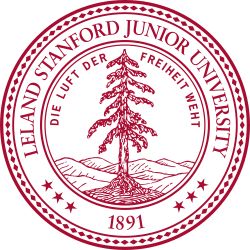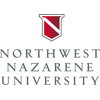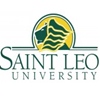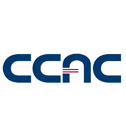Community College of Allegheny County (CCAC) is the largest community college in Pennsylvania. Here is a detailed introduction to it:
1. School History
The college was founded in 1966 with the goal of providing high-quality, accessible and affordable higher education and vocational training opportunities to residents of Allegheny County. Since its inception, CCAC has been constantly adapting to the needs of the community and playing an important role in the field of education.
2. School size
Number of students: The college serves approximately 30,000 students each year, with a diverse student population, including students who have just graduated from high school, people seeking career advancement or conversion, and adults who want to re-enter the field of education.
Campus distribution: The college has multiple campuses located in different areas of Allegheny County, including Allegheny, Boyce, North, South, West Mifflin and other campuses. The locations of these campuses facilitate the schooling needs of residents in different regions.
3. Academic strength
Professional settings
Degree courses: Associate degree courses are offered, covering a wide range of fields. In the business field, there are majors such as accounting and business administration; in the field of health sciences, there are majors such as nursing, medical assistants, and radiology technology, which have trained a large number of professional talents for the medical industry; in the field of information technology, there are majors such as computer programming and network technology to meet the needs of the modern technology industry.
Certificate courses: In addition to degree courses, a wealth of certificate courses are also offered. These certificate courses are shorter and more targeted. For example, in the field of automotive technology, there are certificate courses for automobile repair, and in the field of culinary arts, there are certificate courses for baking, which can help students quickly master specific skills and enter related industries.
Teaching characteristics
Practical teaching: Focusing on practical operations, many majors are equipped with advanced laboratories and internship facilities. Taking the nursing major as an example, students have the opportunity to conduct practical training in simulated wards, and will also be arranged to conduct clinical internships in cooperative medical institutions, allowing students to accumulate experience in a real working environment.
Flexibility: The course schedule is flexible, with full-time, part-time and online courses. This flexibility allows students to choose the most suitable learning method according to their life and work situation. For example, working people can take classes in the evening or on weekends.
Faculty: The college has a team of highly qualified teachers who not only have a deep academic background, but also have rich industry experience. They can integrate cases and experiences from actual work into teaching, helping students to better understand and apply what they have learned. At the same time, the teacher-student ratio is relatively reasonable, which can ensure that teachers can provide effective guidance to students.
IV. Campus Life
Student Organizations: The college has a variety of student organizations covering multiple fields such as academics, culture, art, and sports. For example, there are academic interest groups, such as the Computer Science Club, where members regularly organize learning discussions, technology sharing and other activities; there are also cultural clubs, such as the International Student Club, which will hold cultural exhibitions of different countries to promote cultural exchanges.
Sports Activities: A variety of sports activities are provided, and students can participate in sports competitions on campus, such as basketball, volleyball, football and other events. These sports activities not only help students to strengthen their bodies, but also cultivate teamwork spirit and competitive awareness.
Campus Facilities: There are modern teaching facilities on campus, including classrooms, laboratories, libraries, etc. The library has a rich collection of books and a large number of academic books, journals and electronic resources, which provide strong support for students' learning and research. At the same time, each campus is also equipped with living facilities such as restaurants and student lounges to provide convenience for students.
V. Admission Requirements
Open Enrollment Policy: The college implements an open enrollment policy. For most courses, students can apply for admission as long as they have a high school diploma or equivalent (such as GED). This provides opportunities for many students who are willing to receive higher education but may have difficulties under traditional admission standards.
Special Major Requirements: However, for some special majors, such as nursing, medical technology, etc., there may be additional admission requirements, such as the need to complete specific prerequisite courses, pass skills tests or interviews.
VI. Tuition and Scholarships
Tuition Standards: Tuition is relatively low, and there are different charging standards for county residents, in-state residents, and out-of-state residents. County residents have the lowest tuition to encourage local residents to receive education. For example, the credit tuition for county residents may be around $100-200 per credit, and the specific cost will fluctuate depending on the type of course and other factors.
Scholarships and Grants: The college offers a variety of scholarship and grant opportunities. There are academic merit scholarships for students who have excelled in high school or while studying at CCAC, and need-based grants to help students with financial difficulties to ease the tuition burden. In addition, the college will assist students in applying for federal and state government aid programs.
-

Harvard University
-

Massachusetts Institute of Technology
-

South University
-

University of West Georgia
-

Stanford University
-

Northwest Nazarene University
-

Hawaii Pacific University
-

Shorter University
-

Nova Southeastern University
-

Saint Leo University
-

Mesoamerican University
-

Istmo University
-

Mariano Galvez University of Guatemala
-

Regional University of Guatemala
-

Galileo University
-

Francisco Marroquín University
-

Rafael Landívar University
-

University of the Valley of Guatemala
-

University of San Carlos of Guatemala
-

Technological Institute of Tlaxcala Plateau
-

Golfo University
-

Technological University of South Sonora
-

Technological University of Huejotzingo
-

Tizimín Institute of Technology
-

Chilpancingo Institute of Technology

